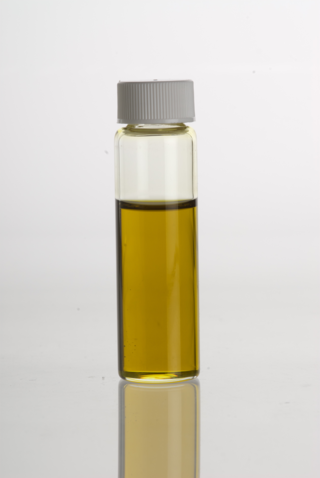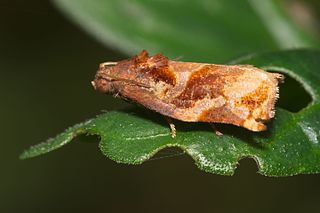
Avocado Heights is an unincorporated census-designated place (CDP) in the San Gabriel Valley of Los Angeles County, California, United States. It is almost entirely surrounded by the City of Industry with only a small strip of unincorporated Los Angeles County separating it from South El Monte. It is in close proximity to both the Pomona (SR-60) and San Gabriel (I-605) freeways. To the west is the San Gabriel River and the California Country Club. Avocado Heights is approximately 15 miles (24 km) from the downtown Los Angeles Civic Center. The population was 15,411 at the 2010 census, up from 15,148 at the 2000 census.

The avocado is a medium-sized, evergreen tree in the laurel family (Lauraceae). It is native to the Americas and was first domesticated in Mesoamerica more than 5,000 years ago. Then as now it was prized for its large and unusually oily fruit. The tree likely originated in the highlands bridging south-central Mexico and Guatemala. Its fruit, sometimes also referred to as an alligator pear or avocado pear, is botanically a large berry containing a single large seed. Sequencing of its genome showed that the evolution of avocados was shaped by polyploidy events and that commercial varieties have an hybrid origin. Avocado trees are partly self-pollinating, and are often propagated through grafting to maintain consistent fruit output. Avocados are presently cultivated in the tropical and Mediterranean climates of many countries. Mexico is the world's leading producer of avocados as of 2020, supplying nearly 30% of the global harvest in that year.

Guacamole is an avocado-based dip, spread, or salad first developed in Mexico. In addition to its use in modern Mexican cuisine, it has become part of international cuisine as a dip, condiment and salad ingredient.

Persea is a genus of about 150 species of evergreen trees belonging to the laurel family, Lauraceae. The best-known member of the genus is the avocado, P. americana, widely cultivated in subtropical regions for its large, edible fruit.

Avocado oil is an edible oil extracted from the pulp of avocados, the fruit of Persea americana. It is used as an edible oil both raw and for cooking, where it is noted for its high smoke point. It is also used for lubrication and in cosmetics.
Persin is a fungicidal toxin present in the avocado. Persin is an oil-soluble compound structurally similar to a fatty acid, a colourless oil, and it leaches into the body of the fruit from the seeds.

Homona is a genus of moths belonging to the subfamily Tortricinae of the family Tortricidae.

Homona coffearia, the tea tortrix or camellia tortrix, is a moth of the family Tortricidae. The species was first described by Nietner in 1861. It is widely distributed in the Oriental region.

Homona mermerodes is a species of moth of the family Tortricidae first described by Edward Meyrick in 1910. It was described from the Solomon Islands, but is also found in Australia (Queensland), New Guinea and Seram. The habitat consists of bamboo, secondary forests and alluvial forests.
Homona baolocana is a species of moth of the family Tortricidae. It is found in Vietnam.
Homona polystriana is a species of moth of the family Tortricidae. It is found in Vietnam.
Homona obtusuncus is a species of moth of the family Tortricidae first described by Józef Razowski in 2013. It is found on Seram Island in Indonesia. The habitat consists of lower montane forests.
Homona bakeri is a species of moth of the family Tortricidae. It is found in the Philippines on the island of Luzon.
Homona encausta is a species of moth of the family Tortricidae first described by Edward Meyrick in 1907. It is found in Sri Lanka, Luzon in the Philippines and Vietnam.
Homona superbana is a species of moth of the family Tortricidae. It is found in Vietnam.
Chochoyote is a small, round masa dumpling with a central dimple made by pressing a finger into the dough. The dumplings, which may be baked or boiled in broth, are commonly served with the dish Mole Amarillo from Oaxaca.

Avocado soup is a fruit soup prepared using avocados as a primary ingredient. Ingredients used in its preparation in addition to ripe avocados can include milk, cream, half-and-half or buttermilk, soup stock or broth, water, lime juice, lemon juice, salt and pepper. Additional ingredients used can include onions, shallots, garlic, hot sauce, cilantro, red pepper, cayenne pepper and cumin, and water can be used to thin the soup. It is enjoyed widely in areas of Mexico as a classic dish.
Homana, also known as Homona and Homonanda, was a town of ancient Pisidia and later of Isauria and Lycaonia, inhabited in Hellenistic and Roman times. Pliny the Elder puts the town in Pisidia. It appears in the Synecdemus as part of Lycaonia under the name Umanada or Oumanada. It was the capital of the Homanadeis (Ὁμαναδεῖς), who, besides Homana, are said by Tacitus to have possessed 44 forts, a statement opposed to the remarks of Strabo, according to which the Homanades, the most barbarous of all Pisidian tribes, dwelt on the northern slope of the highest mountains without any towns or villages, living only in caves. In the reign of Augustus, the consul Quirinius compelled this little tribe, by famine, to surrender, and distributed 4000 of them as colonists among the neighbouring towns. It became a bishopric; no longer the seat of a residential bishop, it remains, under the name of Homona, a titular see of the Catholic Church.

Avocado and milk in ice is a traditional Filipino dessert or beverage made from avocado in milk and sugar. It is preferably eaten cold. Ice are added, or it is partly frozen before consumption. The milk can also be excluded, mixing avocados directly with sugar. The avocados can also be mashed or puréed, which is usually called avocado milkshake or avocado smoothie. Sliced dessert bananas are sometimes added.












